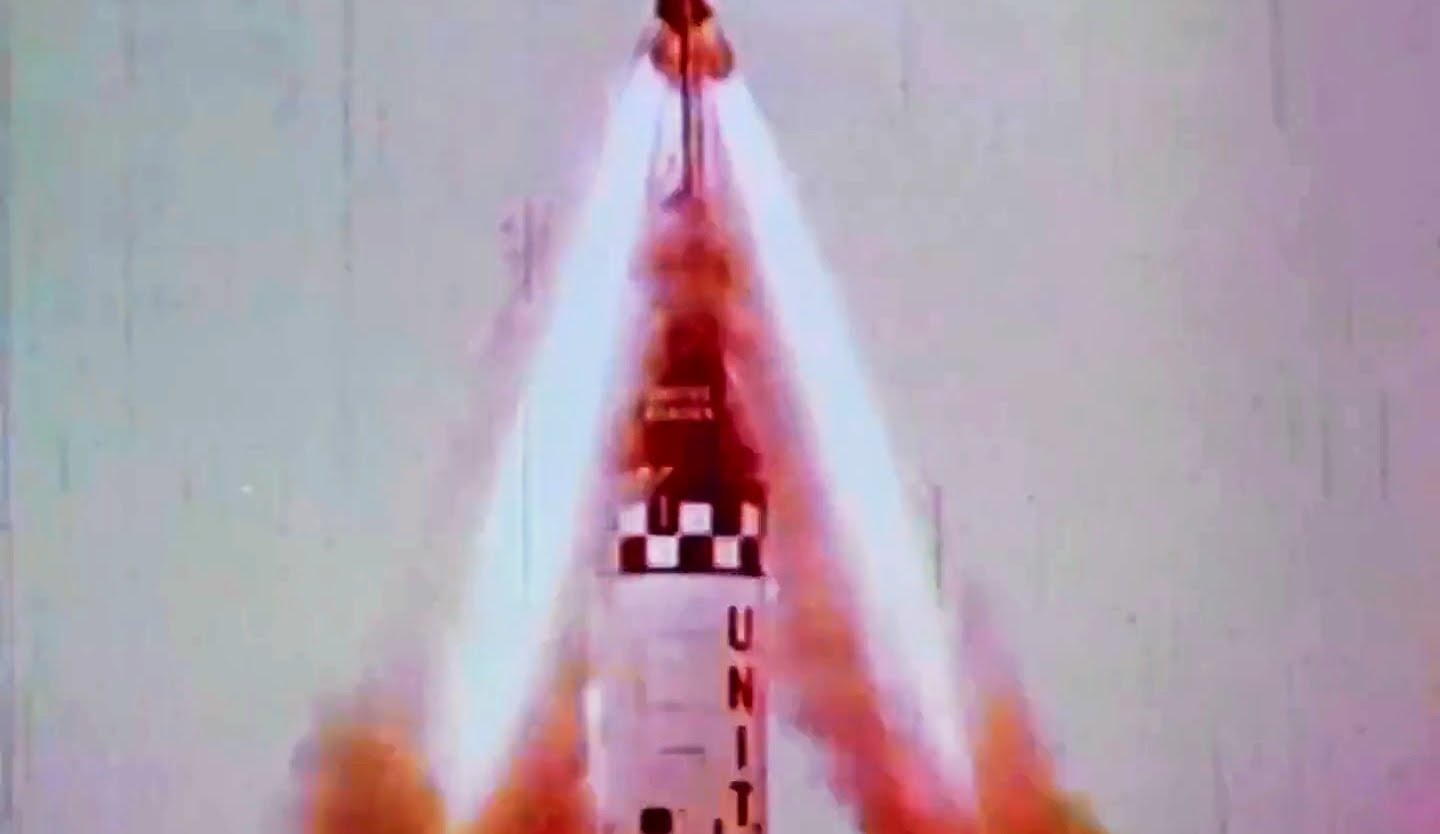more at
Shows Mercury spacecraft manufacturing, testing procedures applied to the Mercury spacecraft before rollout, the failed launch attempt on November 21, 1960 (due to an electrical malfunction in ground support equipment), and successful launch on December 17, 1960.
Public domain film from NASA, slightly cropped to remove uneven edges, with the aspect ratio corrected, and one-pass color correction & mild video noise reduction applied.
The soundtrack was also processed with volume normalization, noise reduction, clipping reduction, and/or equalization (the resulting sound, though not perfect, is far less noisy than the original).
from “This New Ocean: A History of Project Mercury” 1966
MR-1 was on the launch table on November 7, 1960, when the helium pressure dropped from 2250 pounds per square inch to 500 pounds in the capsule control system, and the mission was scrubbed again… Then, on November 21, MR-1 was reassembled and the final countdown proceeded normally, with the exception of a one-hour hold to fix another leak in the capsule’s hydrogen peroxide system. The Mercury Control Center was manned for the first time. At 9 a.m. Redstone ignition occurred precisely as scheduled.
The expected blast momentarily churned the air around launch complex No. 56. But then the roar stopped as suddenly as it had started. Watching by periscope from the blockhouse, the startled engineers saw the booster wobble slightly on its pedestal and settle back on its fins after, at the very most, a four-or-five-inch liftoff.
The Rocketdyne A-7 engine shut down, and the escape pylon zipped up 4000 feet and landed about 400 yards away from the launch site. Three seconds after the escape rocket blew, the drogue package shot upward, and then the main chute spurted out of the top of the capsule followed by the reserve parachute, and both fluttered down alongside the Redstone…
George Low later that day carried STG’s report to the NASA Headquarters staff on what they thought had happened:
“Apparently, sufficient thrust had developed to lift the booster at least 3/32 inch, thereby activating all the systems. (This would require more than 85% of nominal thrust.) The booster settled back down on the pad, damaging the tail fins, and perhaps the structure as well (some wrinkles are visible in the shell). The reason for this shutdown is unknown–the only shutdown to the booster could have come from the booster programmer, at the end of the normal flight sequence. Just how this programmer malfunctioned cannot be determined without a detailed inspection.
“The capsule sequence… was a normal one for the type of signal it received. A closed-loop abort sensing system would have given an abort signal under the conditions of this launching, carrying the capsule away in a regular off-the-pad abort sequence.
“At the time of this writing, the booster destruct system is still armed, and cannot be disarmed until the battery depletion during the morning of November 22. Capsule pyrotechnics (including posigrade and retrograde rocket) are also armed. The problem is further complicated by the fact that the main parachute is still hanging from the capsule; thus the booster could be blown over in a high-wind condition. Weather predictions, however, are good. It is planned to put the gantry around the booster in the morning, under the assumption that the Redstone has not shifted sufficiently to make this impossible. This will be followed by booster and capsule disarming and sequence checks to determine the cause of the failure.
“The extent of damage to the capsule has not yet been assessed. Assuming a minimum of damage, it is planned to use the same capsule, together with the MR-3 booster, for the MR-1 firing. It will probably take a month before this launching can take place…
Two days later, after intensive on-the-scene investigations of the puzzle presented by MR-l, Low reported a better consensus of expert opinion:
“The MR-1 failure is now believed to have been caused by a booster tail plug which is pulled out about one inch after liftoff.
“It has been determined that this two-prong plug is designed so that one prong disconnects about one-half inch before the second one does. This time interval between disconnect of the first and second prongs for MR-1 was 21 milliseconds.
“The booster circuitry is such that if one of these prongs is disconnected prior to the other and while the booster is not grounded, a relay will close giving a normal engine cutoff signal. The time interval between successive disconnects was apparently just sufficient to allow the relay to close…

